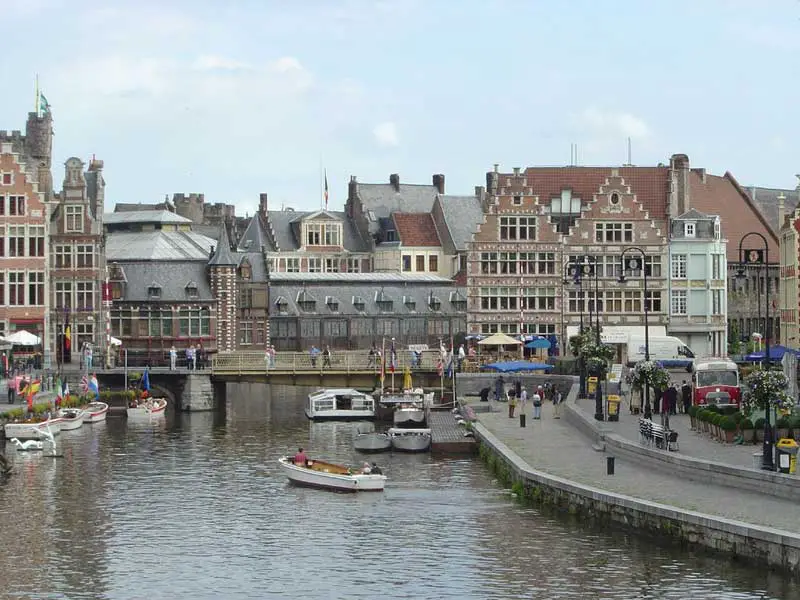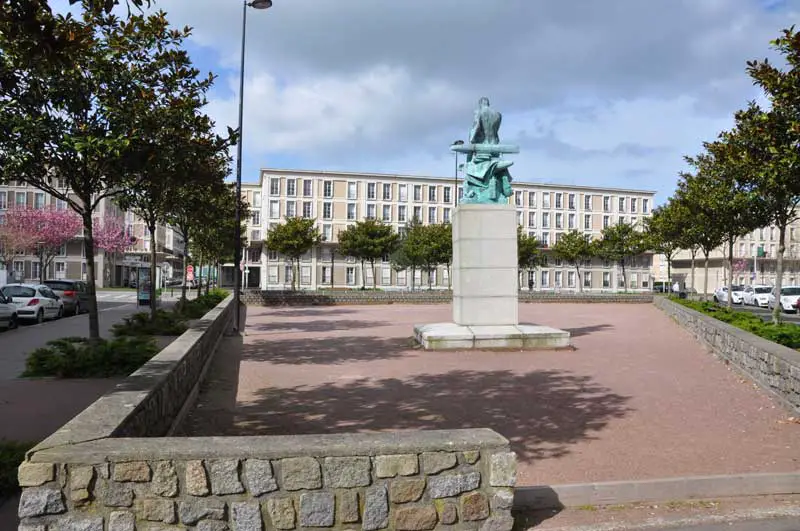About Le Havre, France
Le Havre is a major port in northern France’s Upper Normandy region,
where the Seine River meets the English Channel. It’s joined to the
city across the estuary, Honfleur, by the Pont de Normandie
cable-stayed bridge. Following WWII, Le Havre’s heavily damaged city
center was famously redesigned by Belgian architect Auguste Perret.
Today it features many landmark examples of reinforced-concrete
architecture.
Modern Le Havre remains deeply influenced by its employment and
maritime traditions. Its port is the second largest in France, after
that of Marseille, for total traffic, and the largest French container
port. The name Le Havre means “the harbour” or “the port”. Its
inhabitants are known as Havrais or Havraises. Le Havre is the most
populous commune of Upper Normandy, although the total population of
the greater Le Havre conurbation is smaller than that of Rouen. It is
also the second largest subprefecture in France (after Reims).
Trains run to/from Paris regularly, taking about 2 hours: most stop at
Rouen en route. There is also a TGV to/from Marseille once a day. By
public transport it is necessary to go to Rouen by train or bus (using
No. 20 Green Bus). There is a Gray Coach to Etretat and Fécamp
and there is VTNI for destinations in the Seine valley and Rouen who
provide inter-urban services on behalf of the Department of
Seine-Maritime. The company AirPlus provides a shuttle service to the
train stations and airports of Paris.
The Channel maritime links with Portsmouth in southern England with LD
Lines. Two services to Portsmouth are provided daily from the Terminal
de la Citadelle. The link to Ireland was moved to the port of
Cherbourg. Crossing times to Portsmouth vary from five hours and thirty
minutes to eight hours. Popular alternative routes going to areas close
to Le Havre include Newhaven to Dieppe, and Poole to Cherbourg.
Plan and Book:



Overview

Le Havre is French for “the harbour”. Historically, Le Havre has
always been the harbour for Paris, with goods transferring there
between ocean-going vessels and barges which go to Paris via the Seine.
Le Havre, which lies along the English Channel on France’s western
coast, is the common port of entry for big ships calling on Paris and
most typically a place to go through on your way to the City of Lights.
By no means would we dissuade cruise travelers from making the long
slog to “tres magnifique” Paris on a first visit, but on a return trip,
Le Havre itself, both on its own merits and because of its proximity to
Normandy (which is also quite magical), is worth a look-see.
While Le Havre is an ancient and textured city, dating back to the 16th
century, it was badly bombed during World War II, losing much of its
historic appeal. Still, it’s been listed as a UNESCO World Heritage
Site because of the way it was rebuilt; the organization noted that Le
Havre is “exceptional among many reconstructed cities for its unity and
integrity.”
Le Havre’s prime location between Honfleur and Normandy offers a huge
range of options. It’s a gateway to the beaches that witnessed the
bravery of D-Day and to the coasts and countryside that inspired so
many artists. It’s also a good place to visit for its art galleries and
cafes, and it offers a relaxing alternative to the half-day commute
into Paris.

Attractions and Activities
Many buildings in the city are classified as “historical monuments”,
but the 2000s marked the real recognition of Le Havre’s architectural
heritage. The city received the label “City of Art and History” in
2001, then in 2005 UNESCO inscribed the city of Le Havre as a World
Heritage Site.
The oldest building still standing in Le Havre is the Graville Abbey.
The other medieval building in the city is the Chapel of Saint-Michel
of Ingouville. Because of the bombing in 1944, heritage from the modern
era is rare: Le Havre Cathedral, the Church of Saint Francis, the
Museum of the Hotel Dubocage of Bleville, the House of the ship-owner
and the old palace of justice (now the Natural History Museum) are
concentrated in the Notre-Dame and Saint-François areas. The
buildings of the 19th century testify to the maritime and military
vocations of the city: the Hanging Gardens, the Fort of Tourneville,
Vauban docks, and the Maritime Villa. The heritage of the 1950s and
1960s which were the work of the Auguste Perret workshop forms the most
coherent architecture: the Church of Saint Francis and the Town Hall
are the centrepieces. Finally, the reconstruction of many districts is
a showcase for the architecture of the 21st century.
Musee d’histoire naturelle (Museum of Natural History): Founded in 1881
but heavily damaged during World War II, the Museum of Natural History
is housed in Le Havre’s former law courts, built in the mid-18th
century; the façade and monumental staircase are listed as
historical monuments. The museum houses mineralogy, zoology,
ornithology, palaeontology and prehistory departments as well as 8,000
early 19th-century paintings from the collection of local naturalist
and traveller Charles-Alexandre Lesueur (1778–1846). The museum
was destroyed during Allied bombings on 5 September 1944. The library
was lost, along with its collections of photographs, scientific
instruments and archives. The mineral and geological collections were
all destroyed, including a rare collection of local mineral specimens
of Normandy. The destruction of the museum was so intense, that all the
catalogues, lists of donations, lists of purchases and other archives
prevented even a precise inventory of all that was lost.”
Cathedrale Notre Dame. Visit it and walk around it. You’ll get a
striking contrast between the 15th century cathedral and the buildings
constructed in the ’50s and ’60s around it. The foundations of the
cathedral are lower than the other buildings because they were built on
the ruins of the old town.
The view of the port (bassin du commerce) with its lovely bridge and
both the Volcano and steeple of St Joseph’s church in the background.
Nice both in the day or at night. On the north quay … the Casino
(gambling, fine restaurants, hotel, spa).
St Vincent district is an old district near the beach which didn’t
suffer too much from the terrible bombings that flattened the city in
1944 and in which 5,000 people died in the ruins in a few hours. The
little church and the square around it evoke a village atmosphere in
southern France. During the season, painters gather on the square and
give an impression of “Montmartre”.
Enjoy a walk in the posh residential area of Ste Adresse overlooking
the Le Havre bay and enjoy nice views of the bay and the city.
Visit the port (whether on a boat or by bike: more information in many
languages from the tourist office situated along the beach).
Rent a bike at the tourist office for a couple of euros and enjoy the
seafront and the city centre at its best. You can also ride to Harfleur
(eastern suburb) which is a lovely medieval town! Montivilliers, a few
miles away is also worth a visit. Nice abbey and town centre.
Climb the tower of Hotel de Ville for an overview of August Perret’s planned city.
Design by W3layouts
